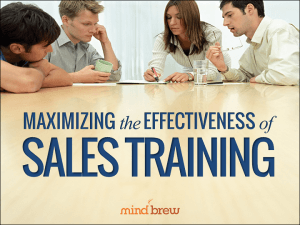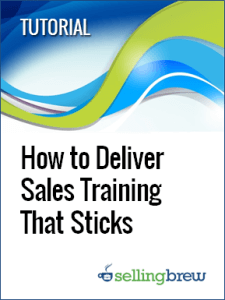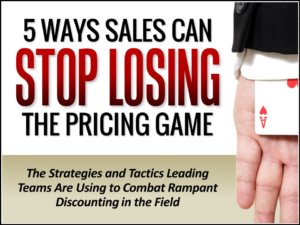What is missing from your sales training program?
We ask because in our experience nearly every B2B firm neglects at least one of the four basic types of sales training. And truthfully, most neglect two or three of the categories. In fact, it’s really, really common for an organization to focus on just one of the four categories.
We have a couple of different theories about why this happens. It might be due, in part, to the personality and experience of the person in charge. For example, some very extroverted sales managers see themselves as the “coach” of the team. In their minds, sales training is synonymous with a pre-game pep talk. So they tend to focus on motivational training.
Other sales managers see themselves more as teachers. They might spend most of their time on the basics, essentially getting the team functionally literate in the sales profession.
But we suspect that the real reason why organizations don’t use all the different types of sales training is that managers simply aren’t aware that the different types exist. Sales team leaders usually attempt to replicate the type of training that they had in the early stages of their own careers. As a result, managers with an incomplete training background pass along that incomplete training to their team members, and the cycle continues endlessly.
But you can break that cycle by learning more about the different types of sales training and making sure that they are all part of your team development strategy. Here they are:
- Basic Sales Skills: Anyone who is new to the sales profession is going to need to spend some time mastering the fundamentals. For example, new hires should understand how to listen actively, ask qualifying questions, prevent and/or handle objections, give an effective presentation, follow up with prospects, send an email, talk on the phone, negotiate, give a demonstration of your products, and use your CRM software. In general, you’ll want to assess new hires’ skills in these areas early in the onboarding process and make sure these topics get covered in their initial training. For some skills, like using your sales software, a quick, one-time overview is all that is necessary. But many of these basic skills take a lifetime to hone and refine. It doesn’t hurt even seasoned sales professionals to have an occasional refresher on communication or negotiation skills.
- Vendor Differentiation: This type of training focuses on why customers should buy from you instead of from someone else. The actual content of the course will vary from company to company, but all training in this category should offer tactics and techniques for positioning your firm as the best option in the market. All B2B firms needs to offer at least a little of this type of training, but it is especially important in markets with a lot of explicit demand, that is, markets where prospects are actively looking for what you have to sell. For example, imagine that you sell pens and pencils—something everyone needs and knows they need to buy. Vendor differentiation training will help you explain why customers should buy from you instead of Amazon.com or the office supply store down the street. Companies need to cover vendor differentiation in the onboarding process and revisit the topic often, especially any time they change their sales strategy, roll out new products or services, or when the market has changed significantly because of a new competitor or other change.
- Demand Creation: This is the one category of sales training that some organizations can do without. If your products and services have only explicit demand, you can skip this one. However, most B2B firms offer a least a few products or services that have latent demand, that is, prospects don’t yet realize that they need what you have to offer. For example, if you make specialized software for a niche market or if your company invents a new product that no one has ever heard of before, you’re going to have to do some demand creation. This type of training helps your sales team understand how to influence and facilitate organizational change. This is a complicated and difficult task, so your sales training should probably revisit this topic fairly regularly, particularly if you only offer products with latent demand.
- Personal Motivation: These are the pep-talk speeches that get sales reps fired up to go out and sell. Many B2B firms focus primarily on this type of sales training while neglecting the others, but this is actually the least effective type of training over the long term. The enthusiasm generated at these events generally wears off after a couple of days or weeks (maybe months if your speaker is really, really good). However, that doesn’t mean that you should neglect this type of training altogether. In the same way that you want sales prospects to make an emotional connection to your product, you need to engage your sales team’s hearts as well as their minds. So go ahead and have a feel-good session that makes every cheer—just don’t forget to do the other kinds of training as well.
Designing a successful sales training program is a complex process, but it can reap huge rewards for your team. To help you along the way, we have a couple of resources. Check out the webinar on Maximizing the Effectiveness of Sales Training and the tutorial How to Deliver Sales Training That Sticks.












